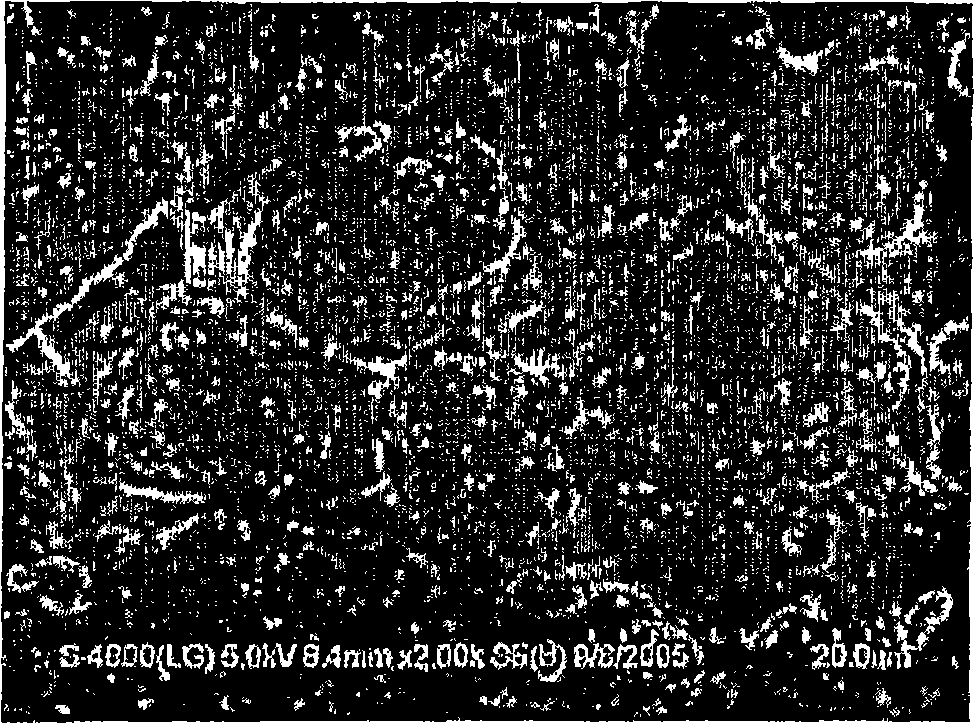Electrode with enhanced performance and electrochemical device comprising the same
一种电极、电极浆料的技术,应用在电极领域,能够解决制造环境污染、增加移除分散介质额外步骤、电池内部电阻增加等问题
- Summary
- Abstract
- Description
- Claims
- Application Information
AI Technical Summary
Problems solved by technology
Method used
Image
Examples
Embodiment 1
[0050] Example 1: Production of Anode for Lithium Secondary Battery Using Acrylate Monomer
[0051] First, 88.6 parts by weight of carbon powder as an anode active material, 10 parts by weight of a pentacrylate monomer having a viscosity of 13,600 cps and a molecular weight of 525 g / mol, 0.4 parts by weight of an azo-type initiator, and 1 Parts by weight of carbon black were added to 30 parts by weight of a mixed solvent containing ethyl carbonate and propyl carbonate in a weight ratio of 1:1 (EC:PC) to form an anode slurry. Then, the anode slurry was coated on a copper (Cu) thin film having a thickness of 10 μm as an anode current collector, and then the coated current collector was dried at 130° C. for 15 minutes to provide an anode. The final binder polymer is a colloidal polymer in which EC and PC are included.
Embodiment 2
[0052] Example 2: Fabrication of Anodes for Lithium Secondary Batteries Using Mixed Acrylate / Isocyanate Monomers
[0053] In addition to using 7 parts by weight of a pentaacrylate monomer having a viscosity of 13,600 cps and a molecular weight of 525 g / mol, 2 parts by weight of a diisocyanate monomer having a molecular weight of 174 g / mol, and 1 part by weight of an acrylate monomer end capped with alcohol functional groups as Anodes were provided in the same manner as described in Example 1 except for the monomer forming the anode. As with the binder polymer of Example 1, the final binder polymer is a colloidal polymer in which EC and PC are included.
Embodiment 3
[0054] Example 3: Fabrication of Anodes for Lithium Secondary Batteries Using Epoxy Reactive Monomers
[0055] In addition to using 89 parts by weight of carbon powder as the anode active material, 7 parts by weight of a poly(ethylene glycol) diglyceride monomer having a viscosity of 13,600 cps and a molecular weight of 540 g / mol, 3 parts by weight of an amine curing agent and as a conductive The anode was provided in the same manner as described in Example 1 except for 1 part by weight of carbon black as the agent. As with the binder polymer of Example 1, the final binder polymer is a colloidal polymer in which EC and PC are included.
PUM
 Login to View More
Login to View More Abstract
Description
Claims
Application Information
 Login to View More
Login to View More - Generate Ideas
- Intellectual Property
- Life Sciences
- Materials
- Tech Scout
- Unparalleled Data Quality
- Higher Quality Content
- 60% Fewer Hallucinations
Browse by: Latest US Patents, China's latest patents, Technical Efficacy Thesaurus, Application Domain, Technology Topic, Popular Technical Reports.
© 2025 PatSnap. All rights reserved.Legal|Privacy policy|Modern Slavery Act Transparency Statement|Sitemap|About US| Contact US: help@patsnap.com


